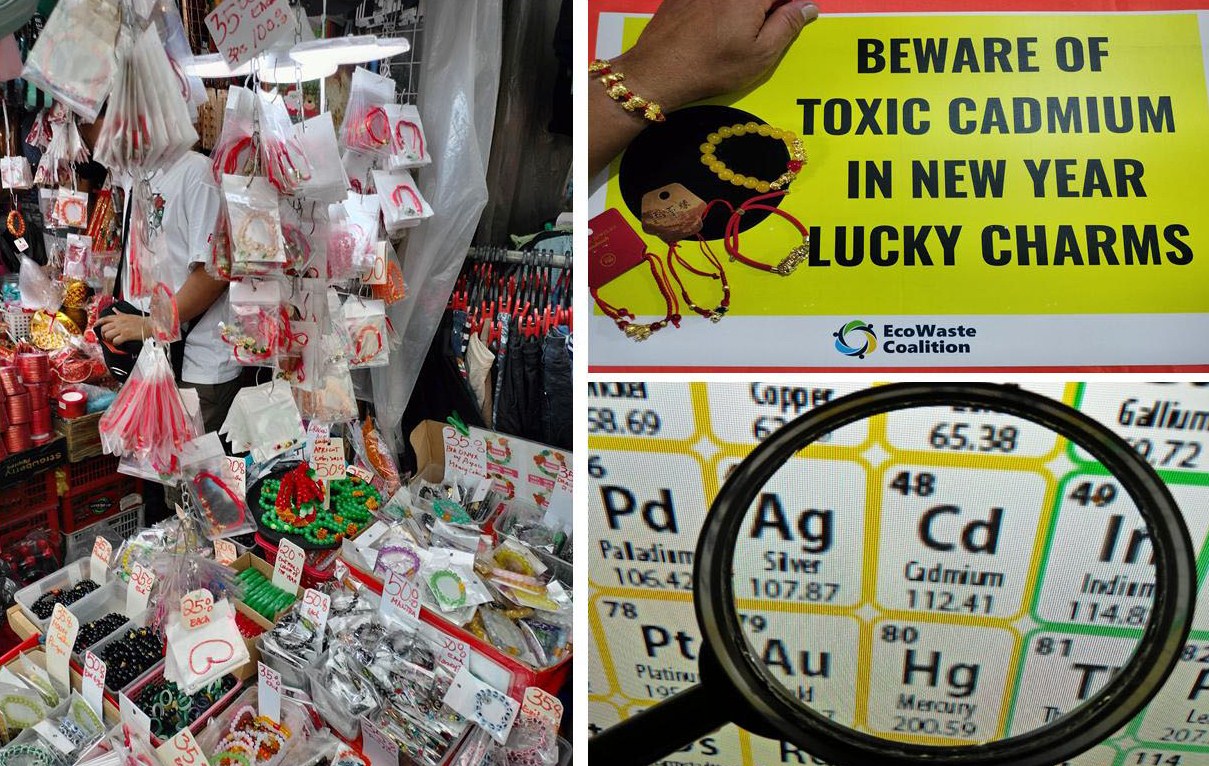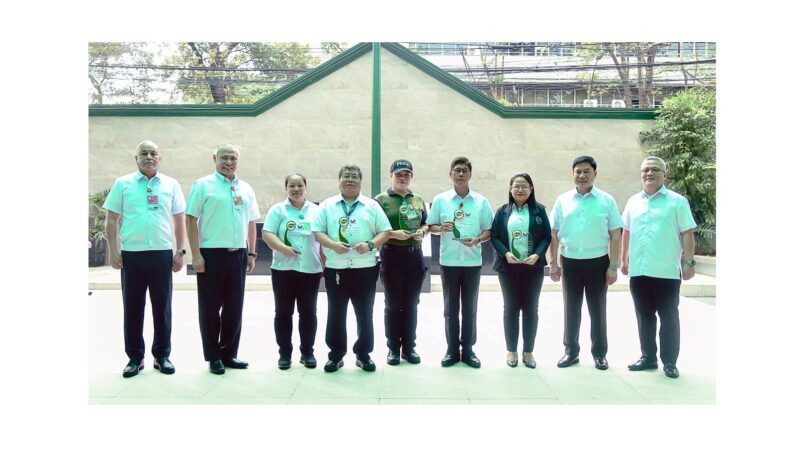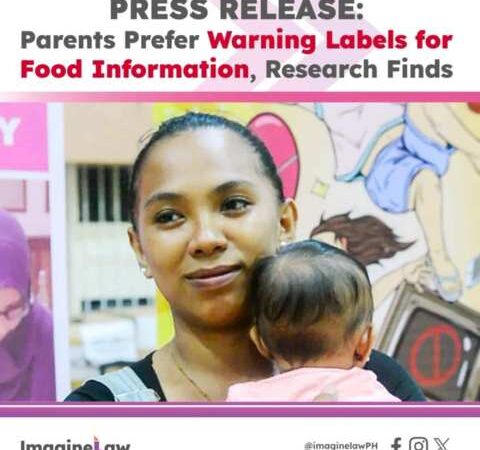EcoWaste Coalition Detects Toxic Cadmium in New Year Lucky Bracelets

Quezon City – (January 1, 2024) The toxics watchdog group EcoWaste Coalition has detected high levels of cadmium, a cancer-causing chemical, in red string and bead bracelets that some people wear to attract good luck with the onset of the New Year.
To usher in the New Year, the group went to Quiapo, Manila, and purchased five bracelets costing P50 to P100 each from lucky charm stores. The bracelets are mostly unlabeled and are adorned with metallic dragon charms as 2024 is the wooden dragon year according to Chinese astrology.
The items were then subjected to chemical screening using a handheld X-Ray Fluorescence (XRF) analyzer, which detected cadmium above 100,000 parts per million (ppm) in the metallic charms. None of the analyzed bracelets provided a cadmium content warning to let consumers know that the product they are buying contains cadmium and may pose a risk of hazardous chemical exposure.
Cadmium, a heavy metal with symbol Cd and atomic number 48, is classified as “carcinogenic to humans” by the International Agency for Research on Cancer (IARC) and is one of the 10 chemicals or groups of chemicals of major public health concern as per the World Health Organization (WHO).
Cadmium is also included in the Philippine Priority Chemicals List. However, cadmium in products such as jewelry is not covered by the Chemical Control Order (CCO) issued in 2021 for cadmium and its compounds. Nonetheless, “the use of products not containing cadmium is encouraged (by the CCO) to prevent and minimize the release of cadmium to the environment.”
Aside from being carcinogenic, cadmium is considered a reproductive and developmental toxicant that is linked with reduced birth weight, premature birth, stillbirth, miscarriage, and congenital anomalies, as well as behavioral disorders and learning difficulties.
In the European Union, under EU Regulation 494/2011, cadmium in jewelry is restricted to 0.01 % (or 100 ppm) by weight of the metal in metal beads and other metal components for jewelry making, metal parts of jewelry, and imitation jewelry articles and hair accessories, including bracelets, necklaces and rings, piercing jewelry, wrist-watches, and wrist-wear, brooches, and cufflinks.
Cadmium-containing bracelets offered for sale in the Philippines would therefore be illegal to sell in Europe, the EcoWaste Coalition pointed out. In fact, several governments in the regional bloc have banned or removed from the market jewelry products containing cadmium, which is, as the EU has warned, “harmful to human health because it accumulates in the body, can damage the kidneys and bones and it may cause cancer.”
Cadmium and other hazardous chemicals should not be present in products that are offered for sale in the marketplace, including products that are marketed to enhance luck, health, and prosperity, the EcoWaste Coalition said.
To prevent cadmium exposure, the watchdog group advised consumers to insist on their right to chemicals in product information, and for manufacturers, importers, distributors, and retailers to recognize such right by disclosing the identity of chemicals in their products.
“Transparency in the chemicals that make up a product, as well as the hazards they pose to health and the environment, should be made mandatory in line with the consumers’ right to know,” the EcoWaste Coalition emphasized. ### (PR)
Reference:
http://www.who.int/ipcs/features/10chemicals_en.pdf?ua=1
http://eur-lex.europa.eu/LexUriServ/LexUriServ.do?uri=OJ:L:2011:134:0002:0005:en:PDF
https://chemical.emb.gov.ph/wp-content/uploads/2021/05/DAO-2021-08-CCO-Cadmium.pdf







